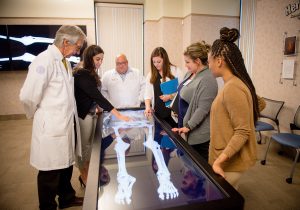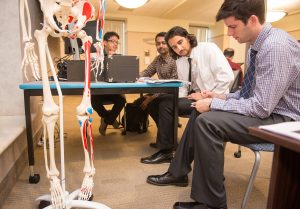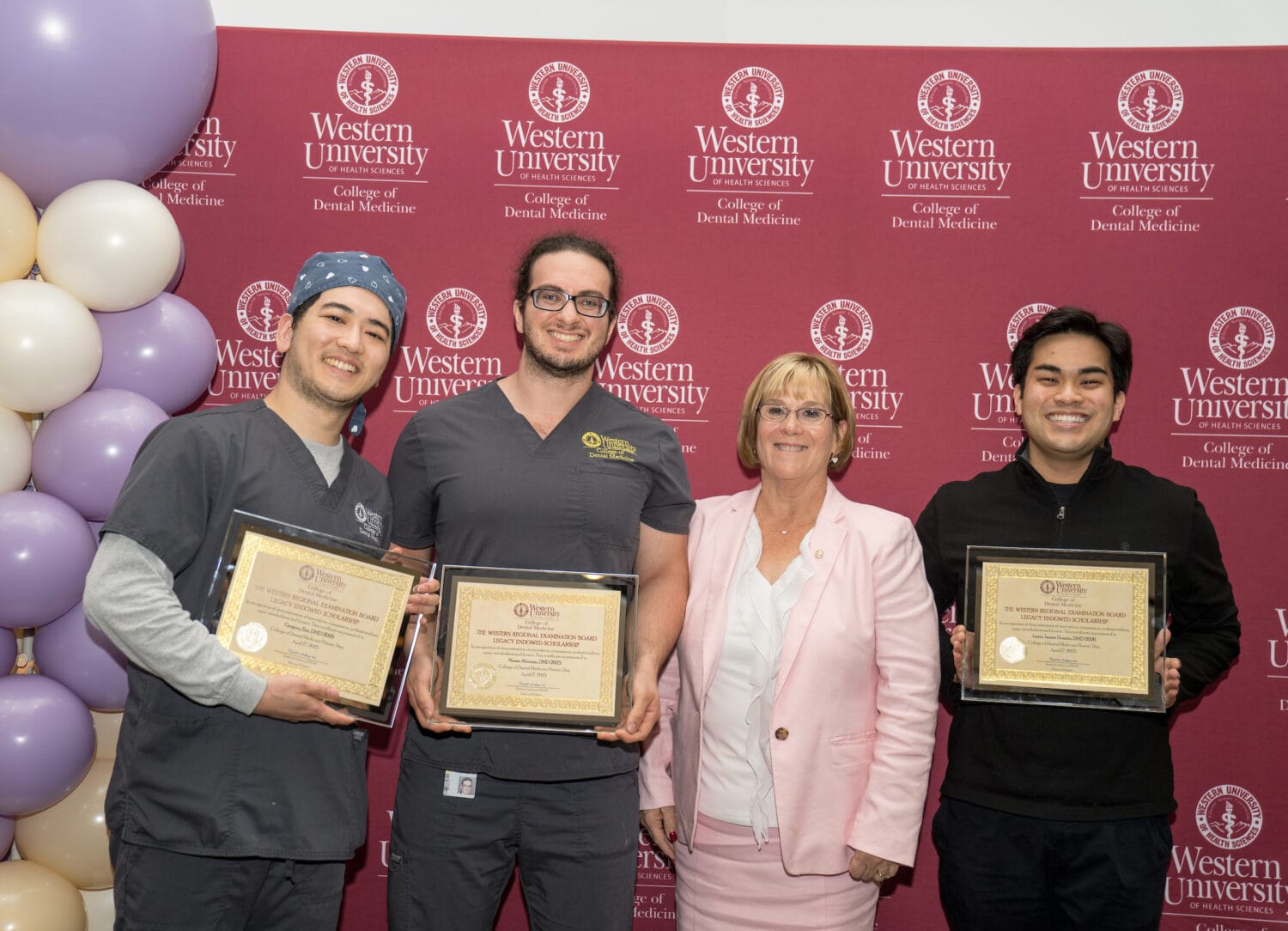VirtualU@WesternU offers anatomy courses for pre-health sciences and podiatry students

Western University of Health Sciences’ VirtualU@WesternU™ is offering new classes that provide aspiring health professionals with a vital preview to the rigors of learning clinical anatomy, and podiatric medicine students a prep course for their third-year board exam.
Learning Enrichment in Clinical Anatomy (LECA) is an intensive one-week training course that helps prepare students for advanced medical, dental, or health professional graduate-level anatomy.
The program was developed by Senior Instructional Designer Hooman T. Mir, DPM, MSc, FAPWCA, College of Dental Medicine Associate Dean Robert Hasel, DDS, and Project Coordinator Briana Young. Anatomy is one of the most advanced and challenging courses required in medical and dental school; one of the main reasons students drop out of school is because they can’t pass anatomy, said Dr. Mir, the co-founder and co-director of the LECA program.
“Anatomy is not a prerequisite for many schools. Students come to medical or dental school, and some have never had anatomy before,” he said. “Our main goal is for undergraduate students and first-year incoming students to get a very advanced, comprehensive course in clinical anatomy before they start their program.”
LECA students are given reading materials and homework assignments before starting the program. They utilize the Anatomage Virtual Dissection Table, Oculus Rift and zSpace in the J and K Virtual Reality Learning Center (VRLC) in WesternU’s Pumerantz Library.
The first LECA session included students interested in osteopathic medicine, physician assistant education and dentistry.
Marina Soliman graduated from UC Riverside in 2015 with a religious studies degree and an Arabic minor. Anatomy and physiology were her favorite science courses, so she wanted to further her anatomy knowledge prior to applying to dental school.
“This will be a good transition into my first year,” she said. “I know the curriculum. I know how heavy the workload is every day. I get to use the very technology students use. To be able to master this technology now will help me in the future. I only have to worry about learning the curriculum, not learning the technology.”
Cortney Cunningham, a Cal State Northridge student studying cellular and molecular biology, would like to become a surgeon. She took an undergraduate anatomy class, but more than 40 students shared one cadaver.
“I think this is very productive program,” she said. “You can immerse yourself completely in anatomy for a week and have one-on-one discussions and get used to the technology here before you’re thrown into the medical school program. You come prepared.”
All WesternU College of Podiatric Medicine students entering their third year recently spent one day in the VRLC preparing for their Lower Extremity Board test, which they must pass to begin their third-year rotations. The LECA Lower Extremity Board Review course is the first of a planned series of board review courses. LECA plans to expand its offerings to include board reviews for dental medicine, osteopathic medicine and physical therapy students.

Previously, students would use the cadaver lab and study on their own, Mir said.
“This is the first time they are using all of these innovative, advanced technologies as a supplement to board review,” he said. The LECA team created a special booklet based on the most common questions on the board exam, and integrated board materials into the Anatomage table, the visible body app on the iPad, and the zSpace station.
“It is nice to have a day of visual integration,” said third-year CPM student Michael Read. “I think that’s probably the highlight of it so far, from my experience.”
The board exam is essentially a cumulative exam covering the first two years of their DPM program, with a heavy emphasis on lower extremity anatomy.
“Future residencies we apply for are going to look at this exam as part of our academic profile,” Read said. “It’s an important benchmark.”
Click here to learn more about LECA: http://virtualu-westernu.com/ce/leca/.



